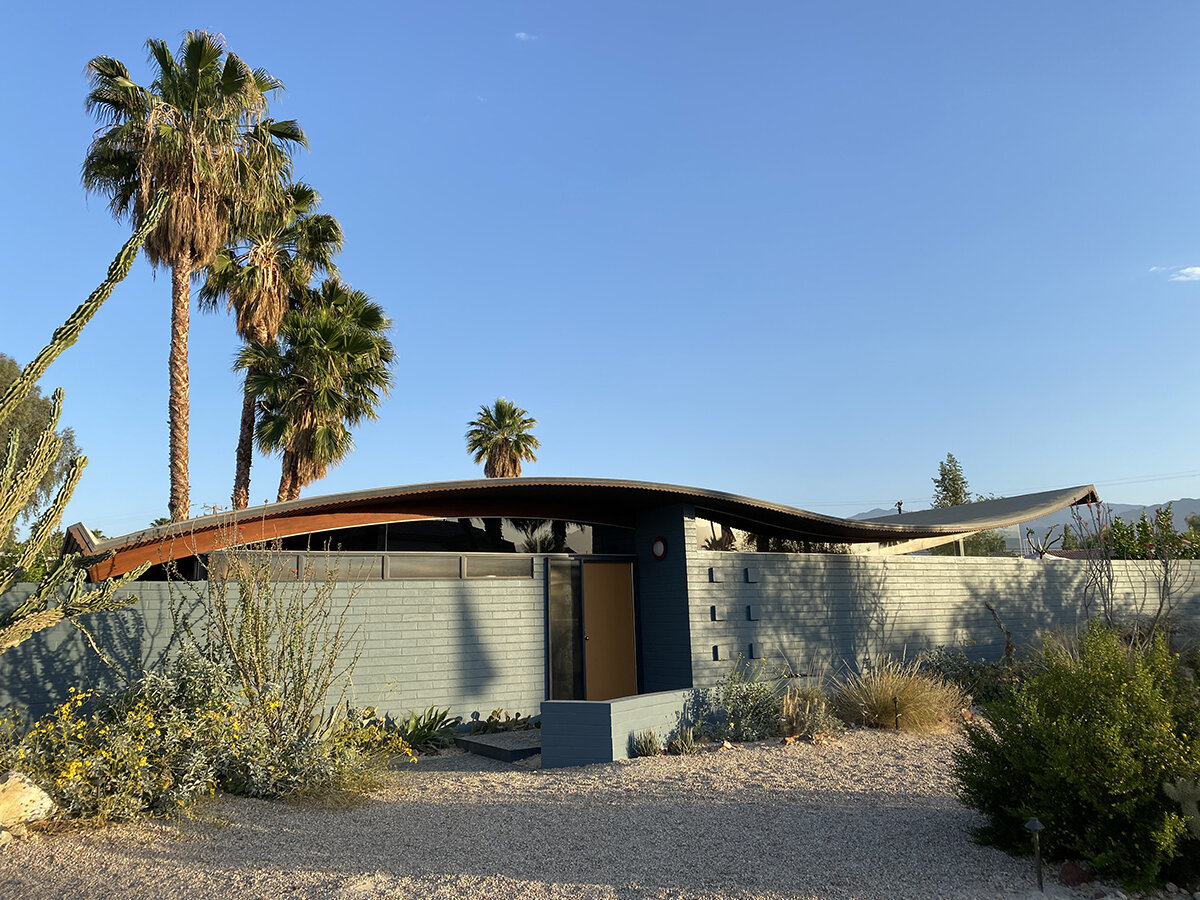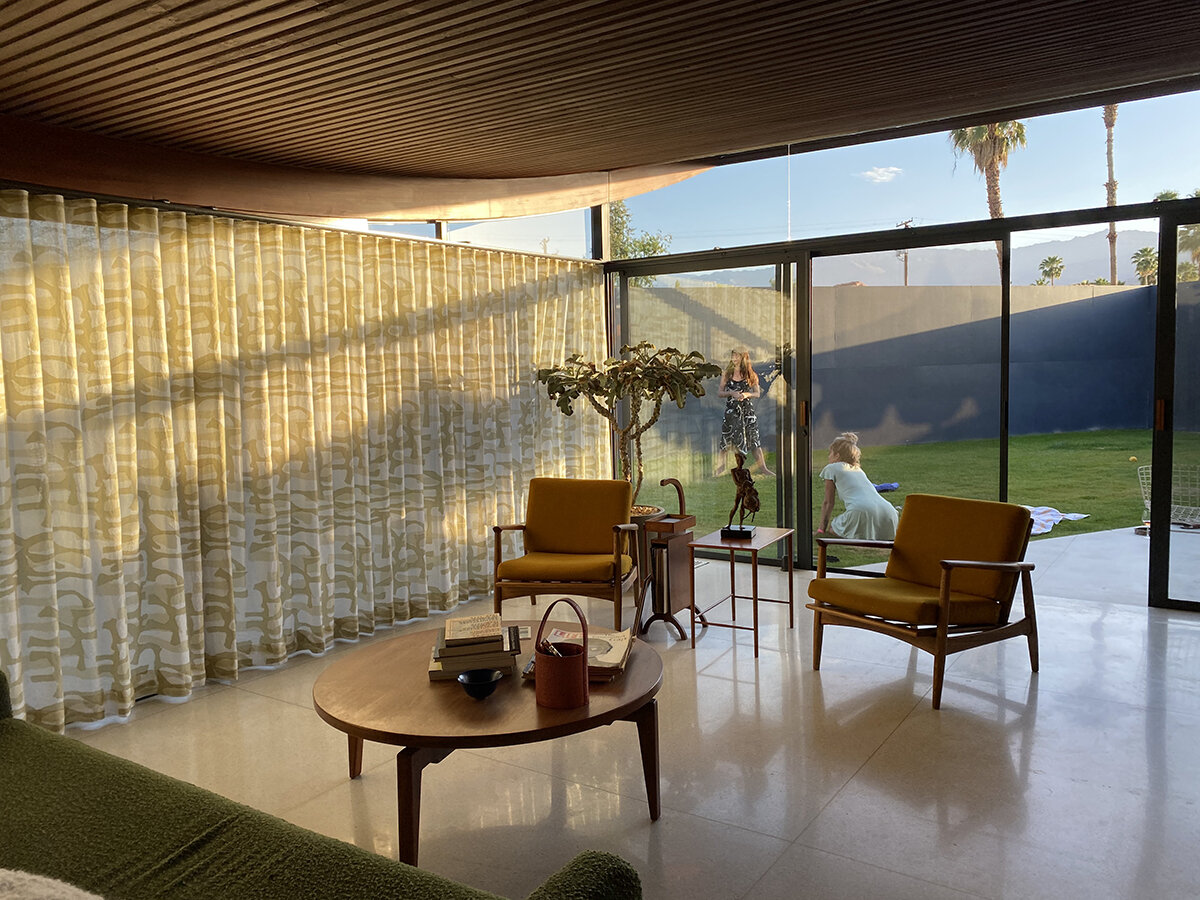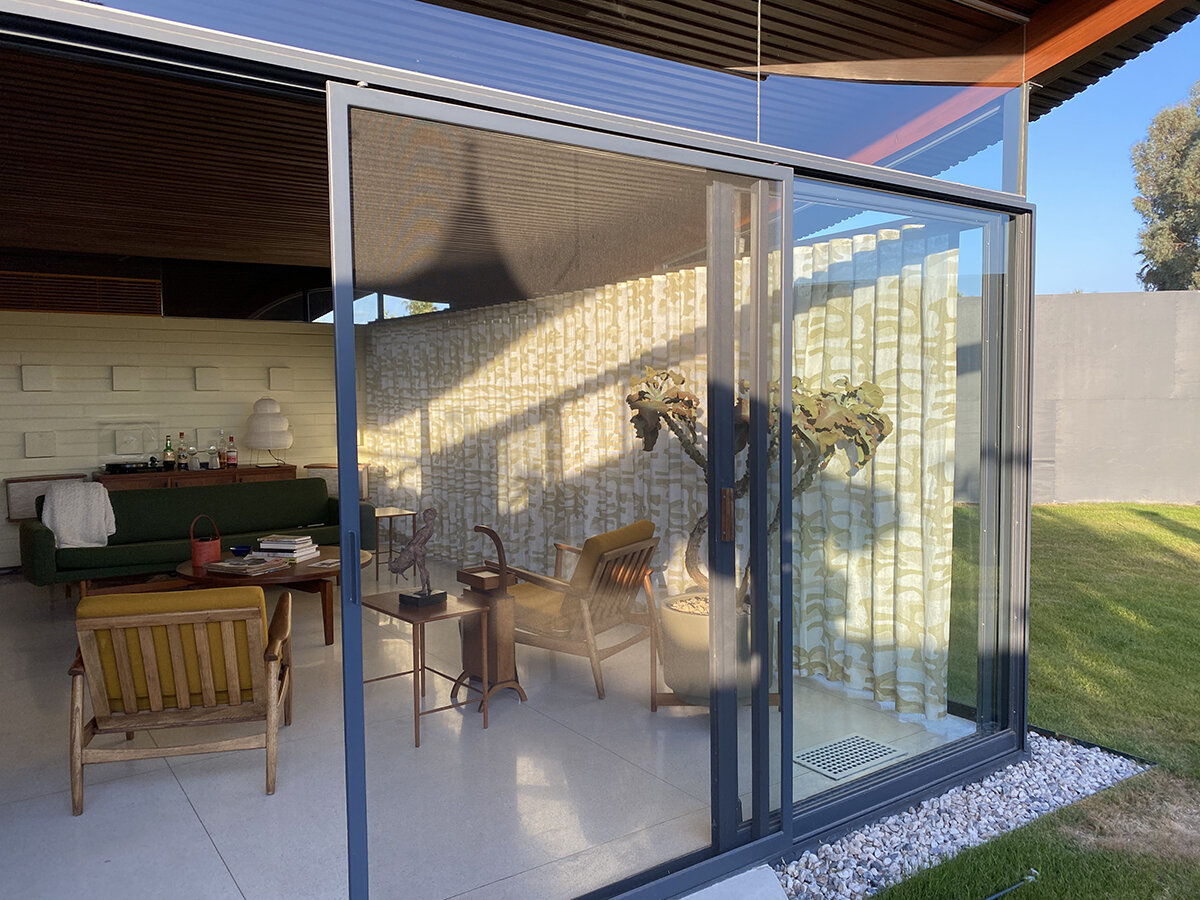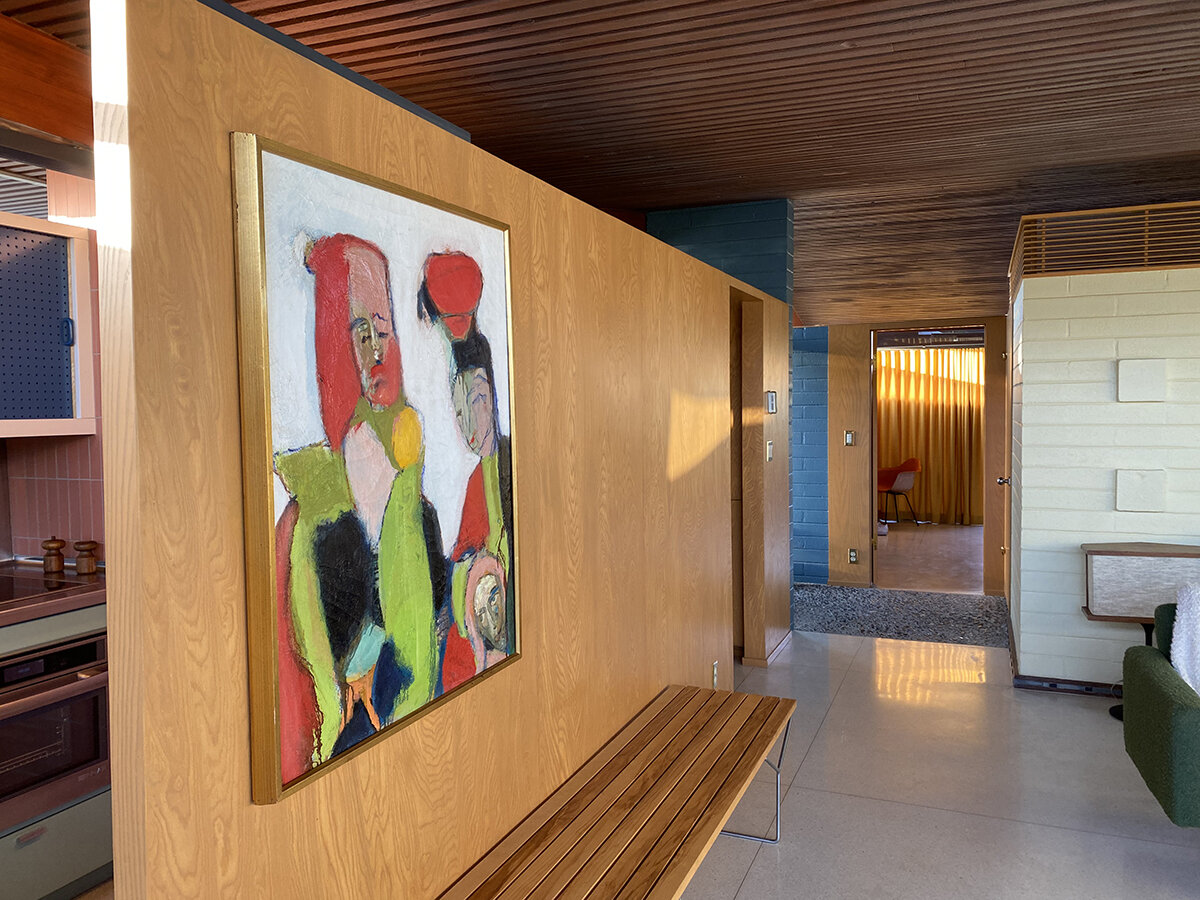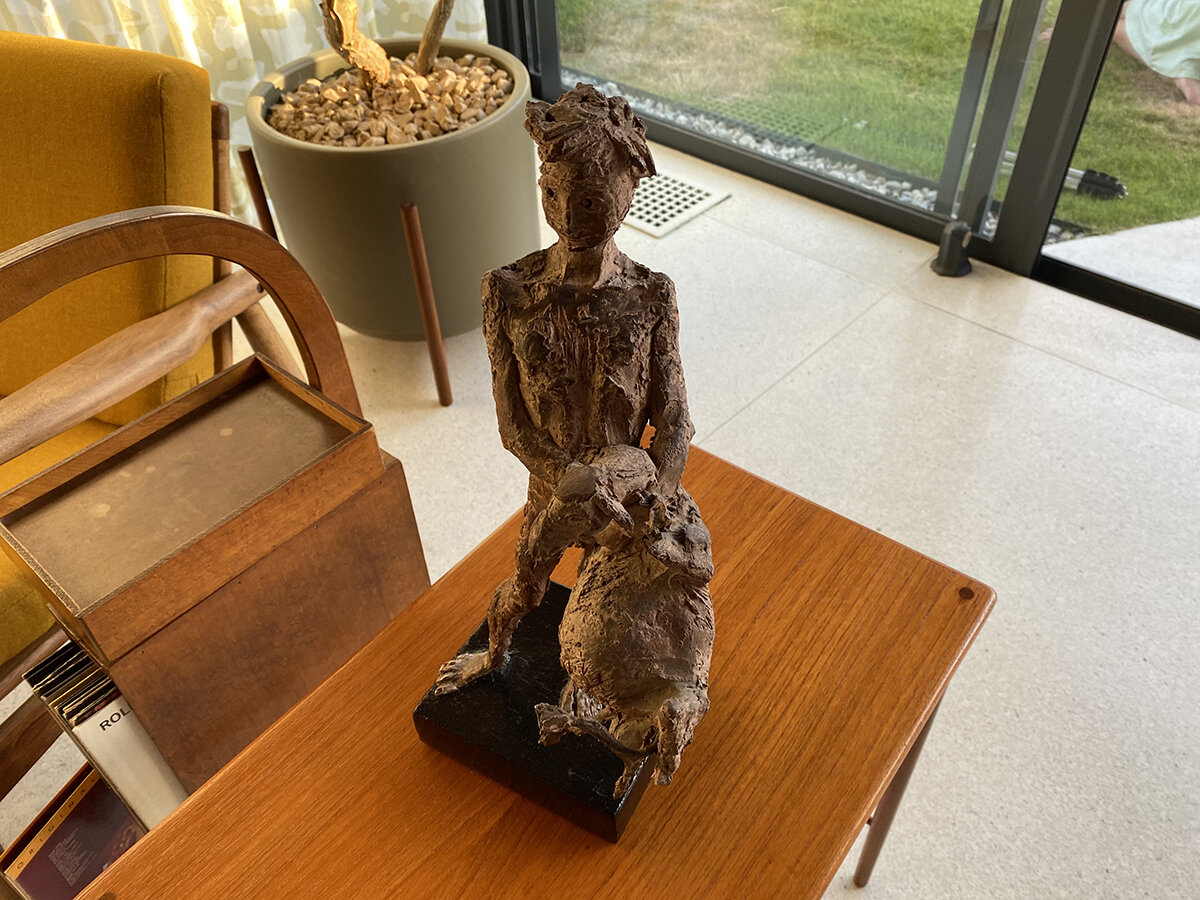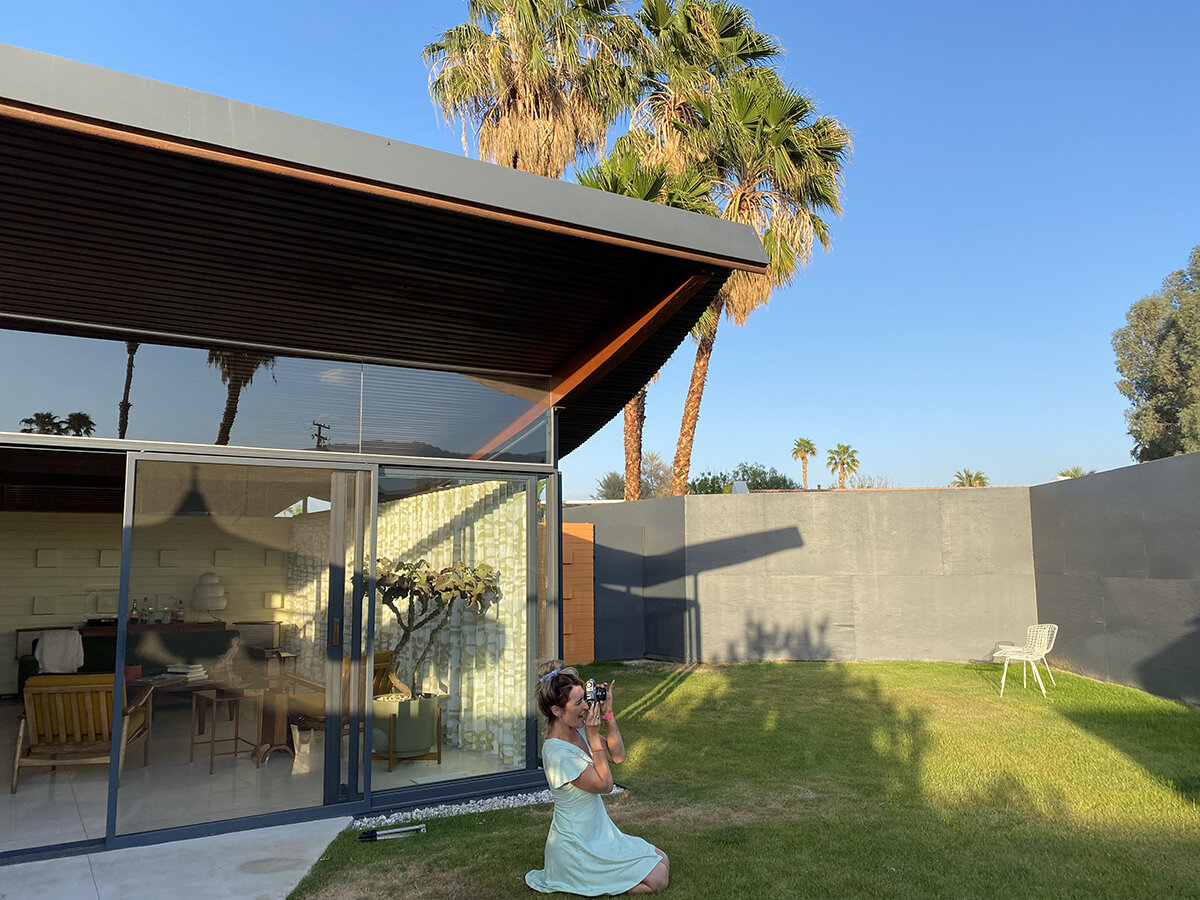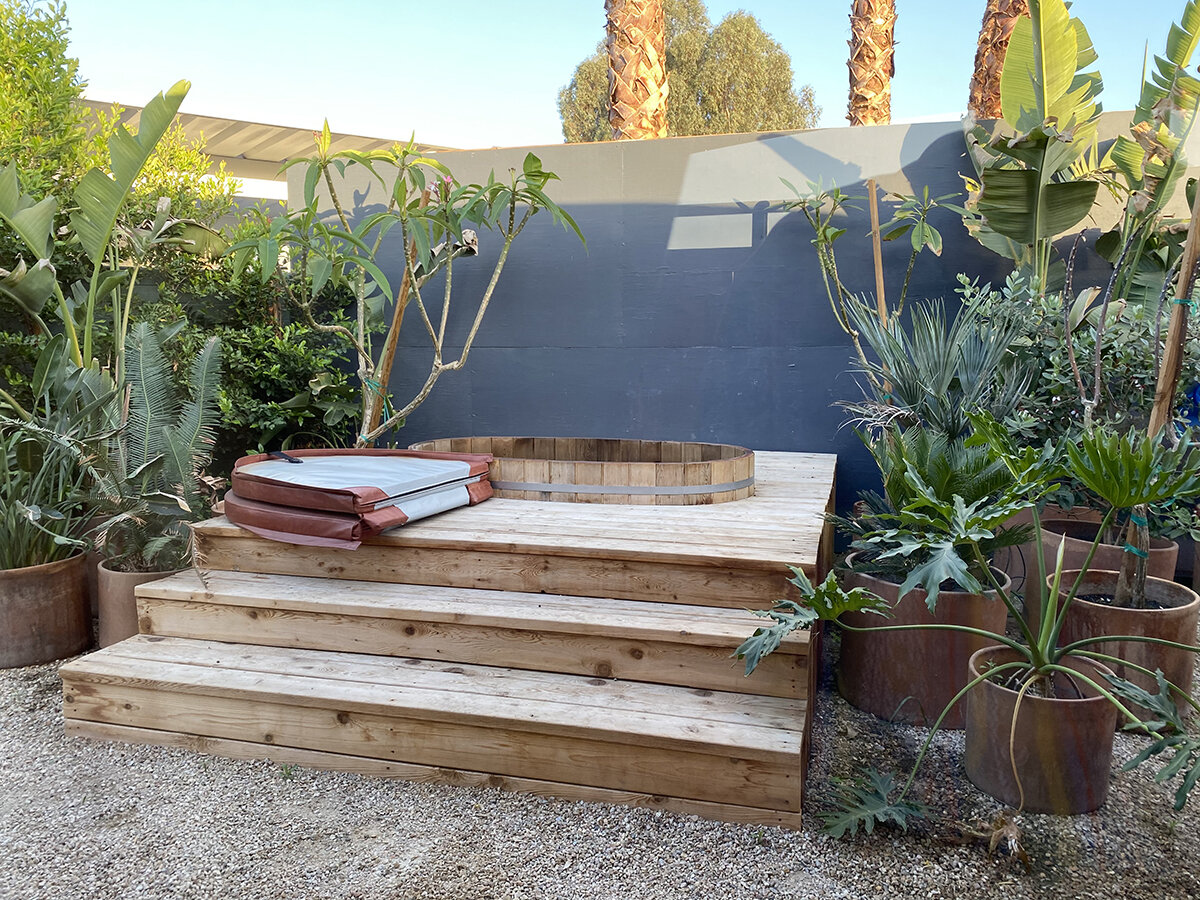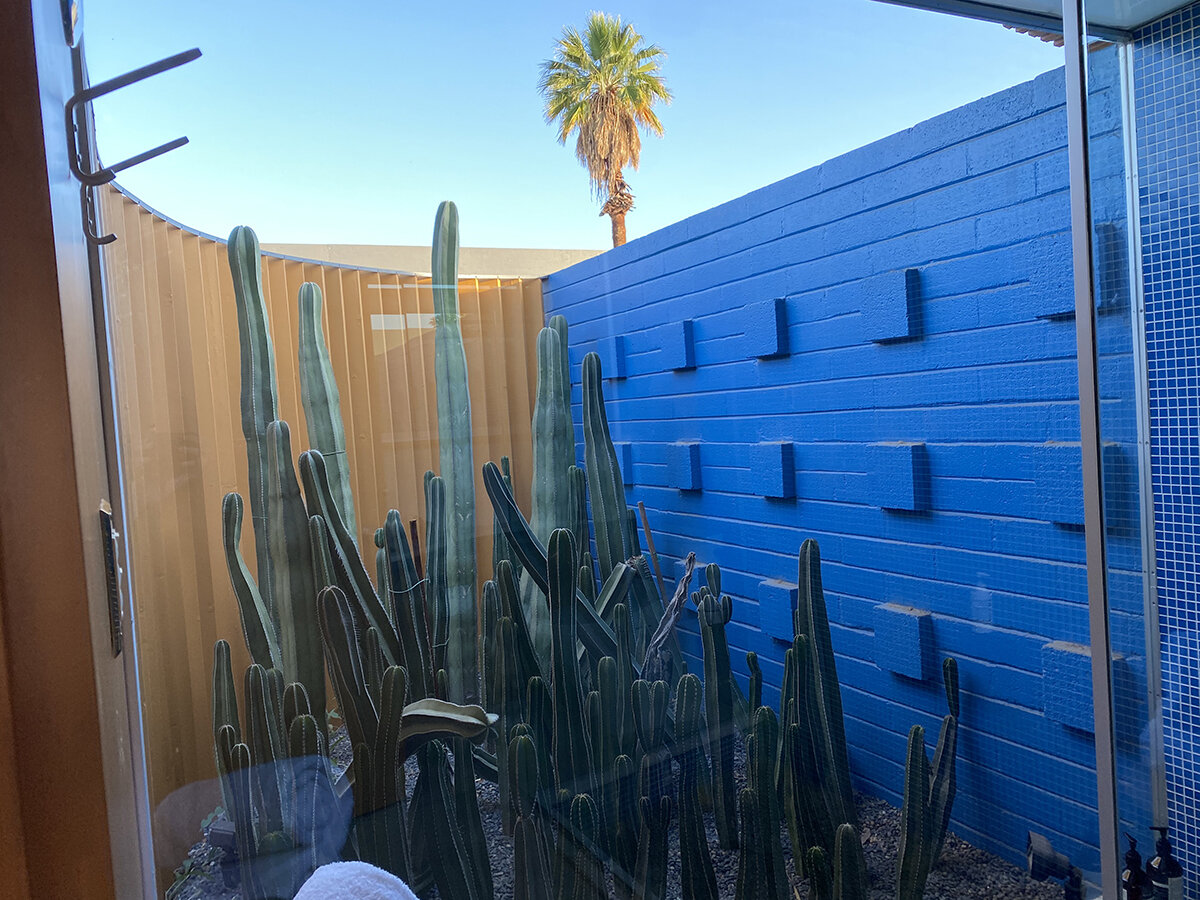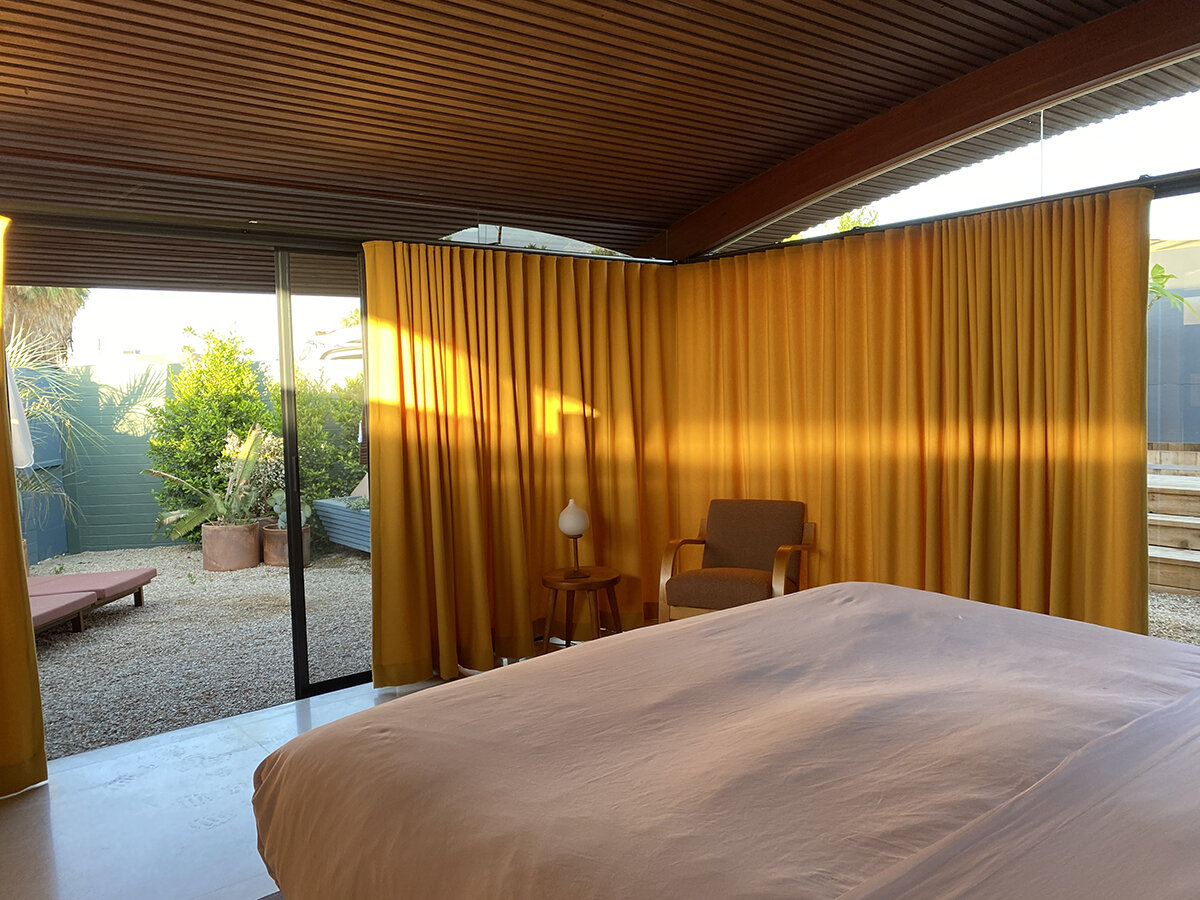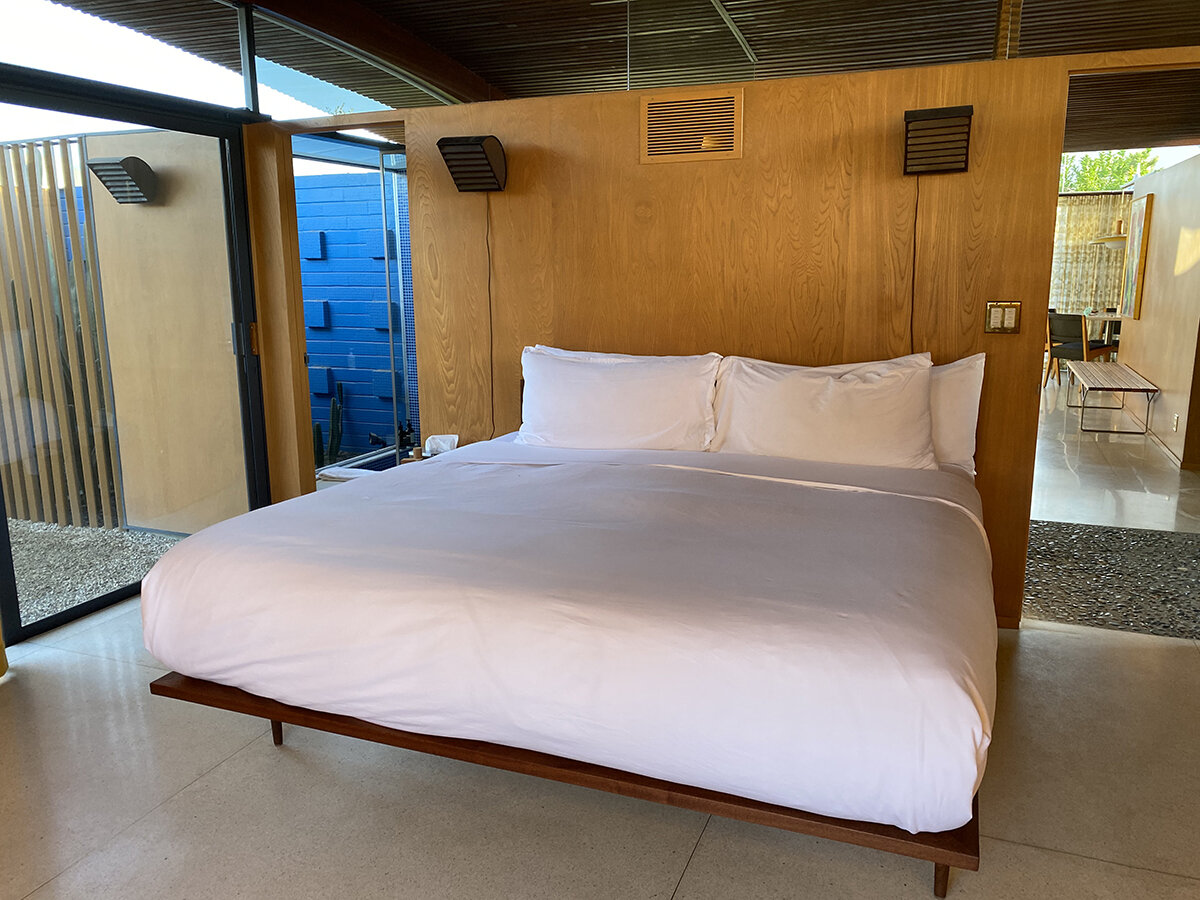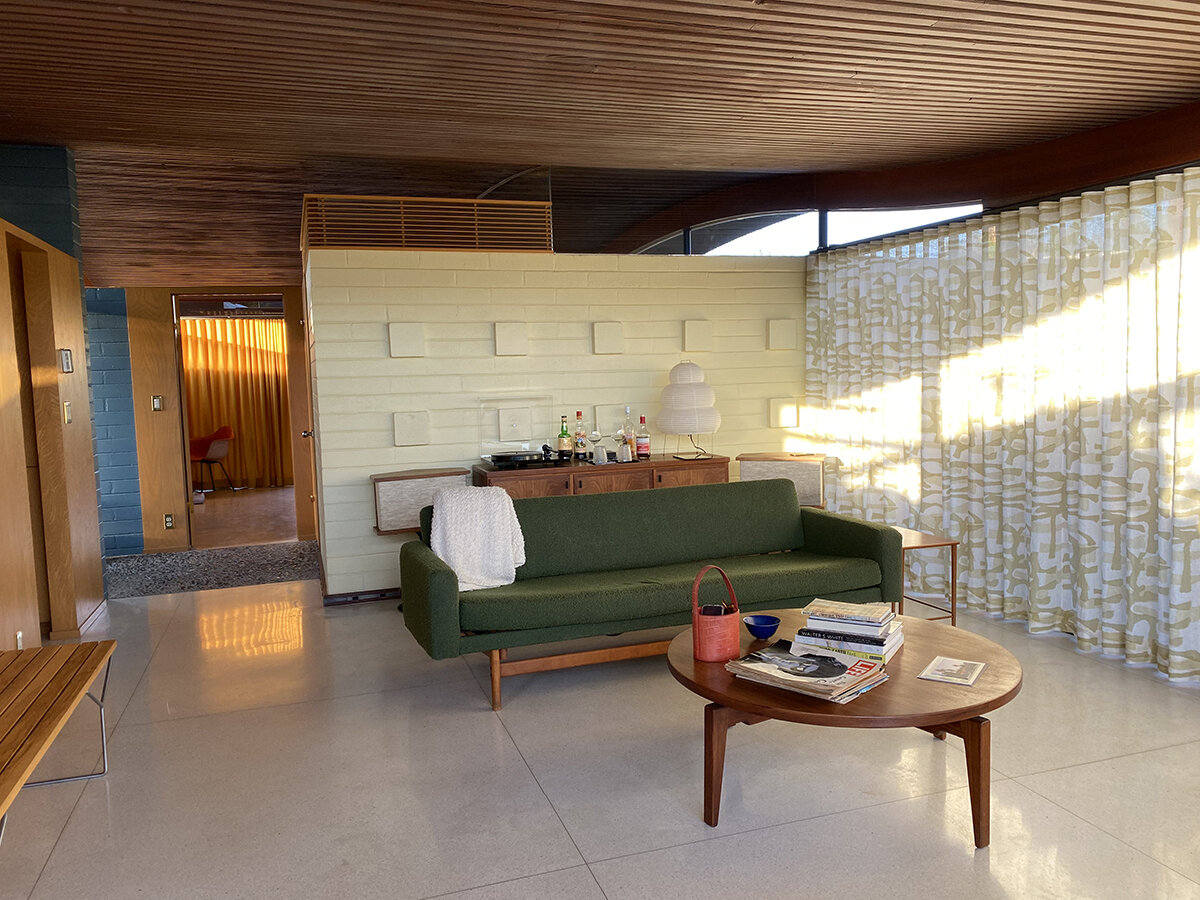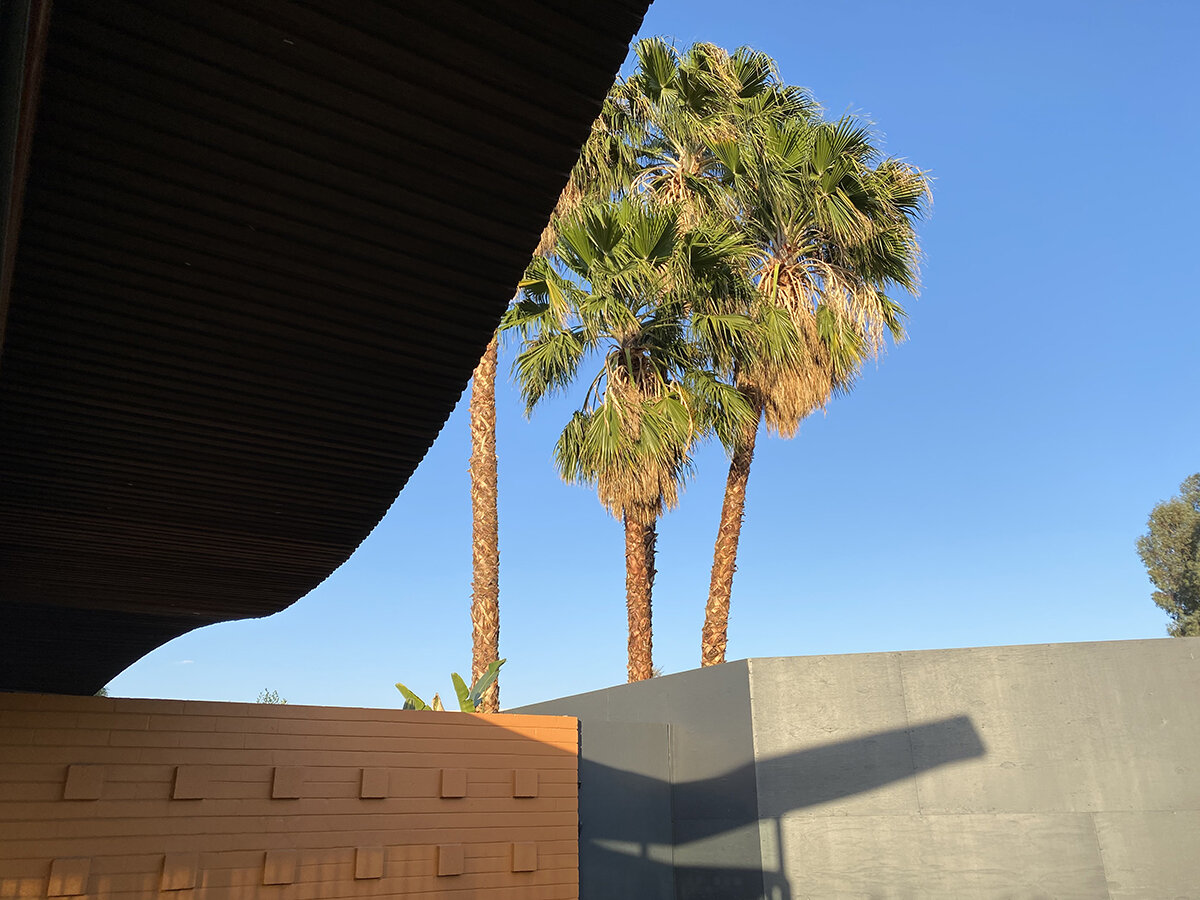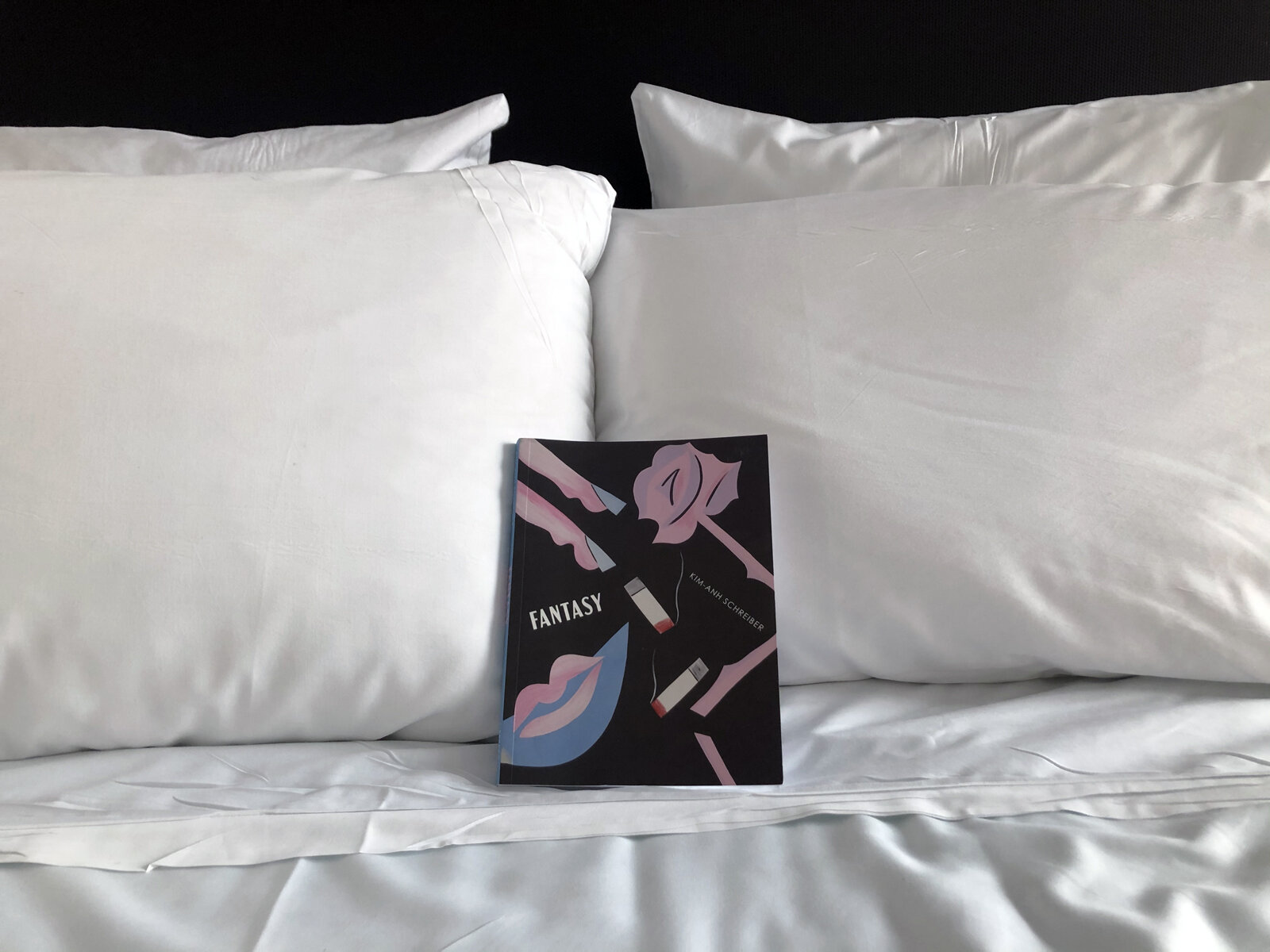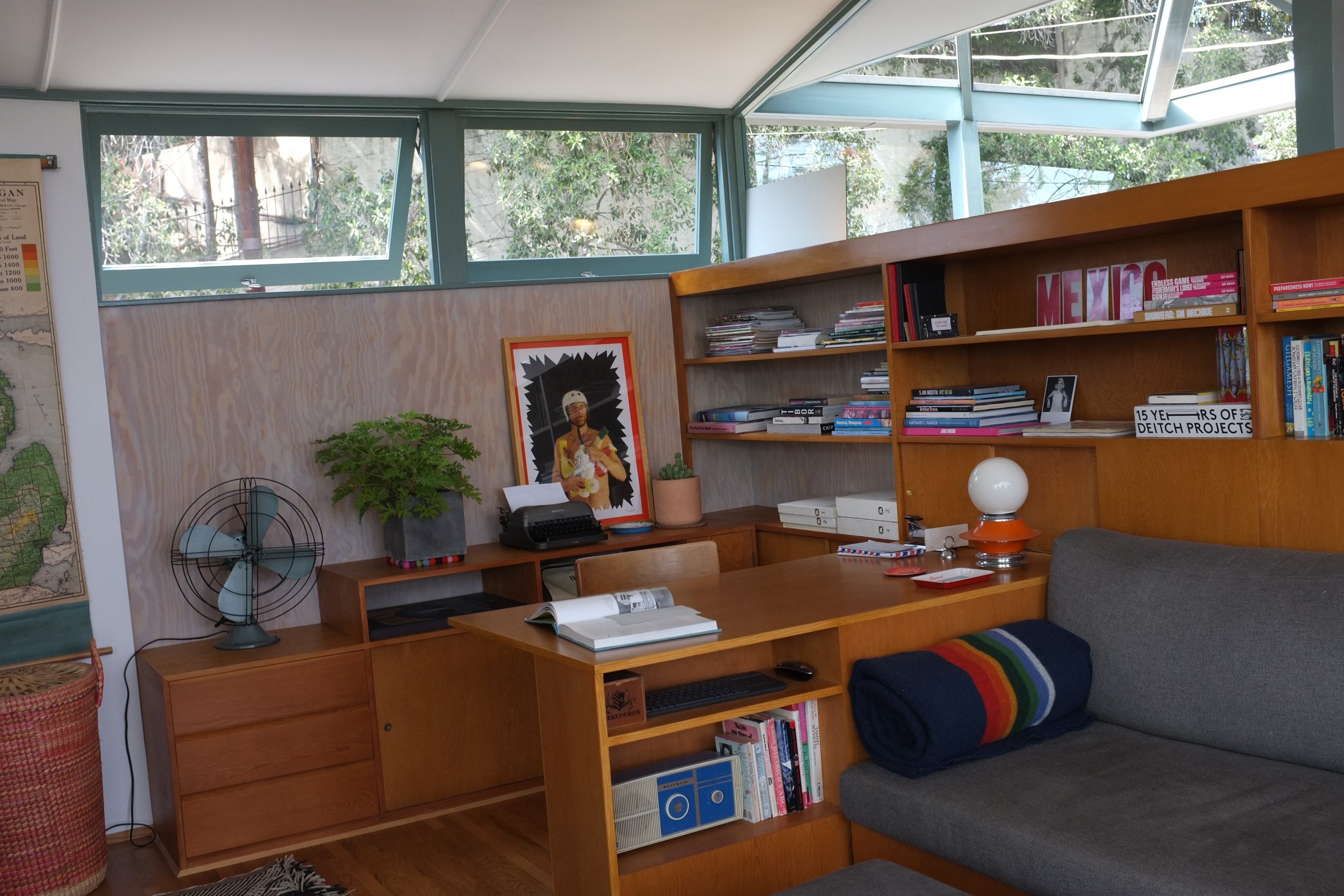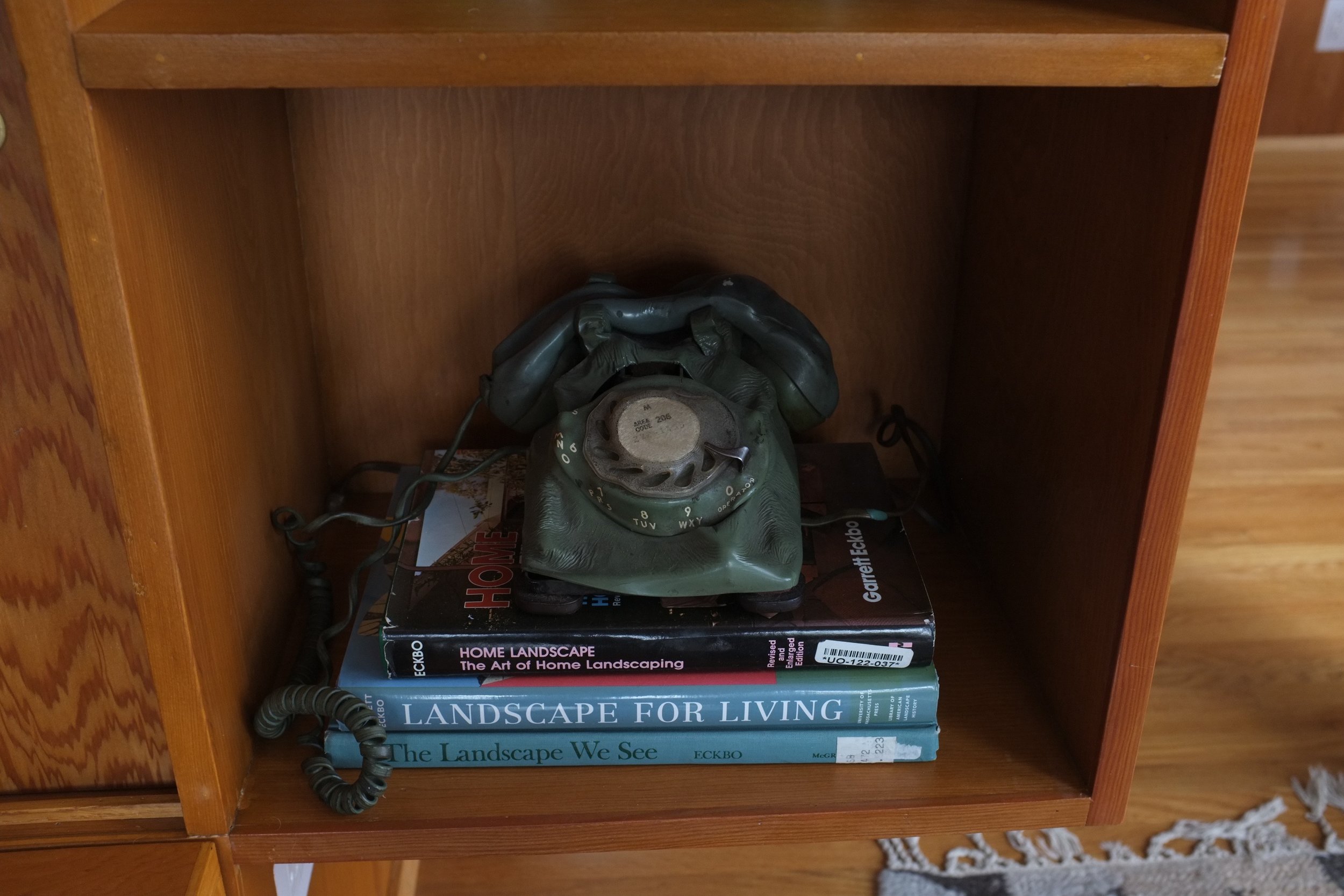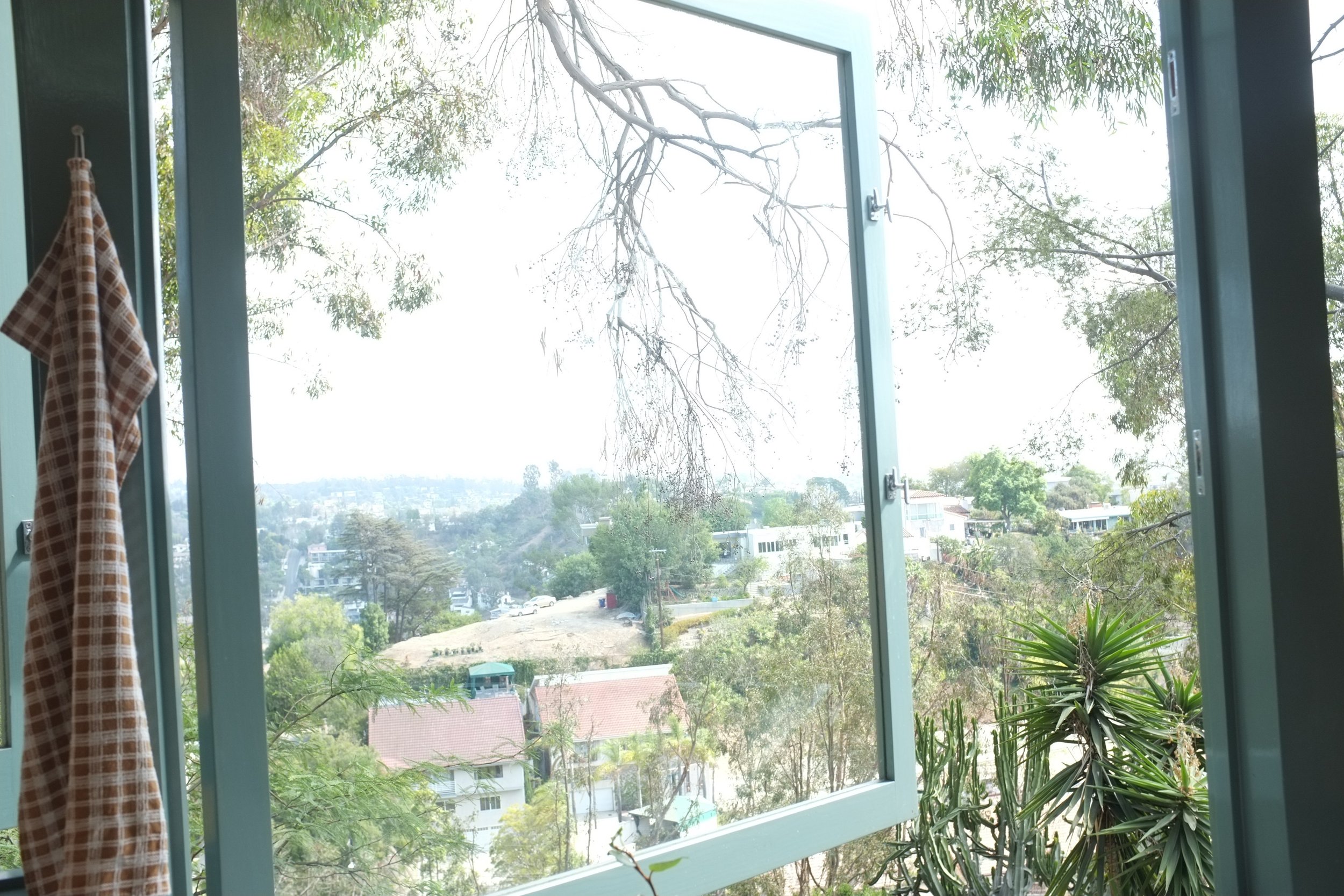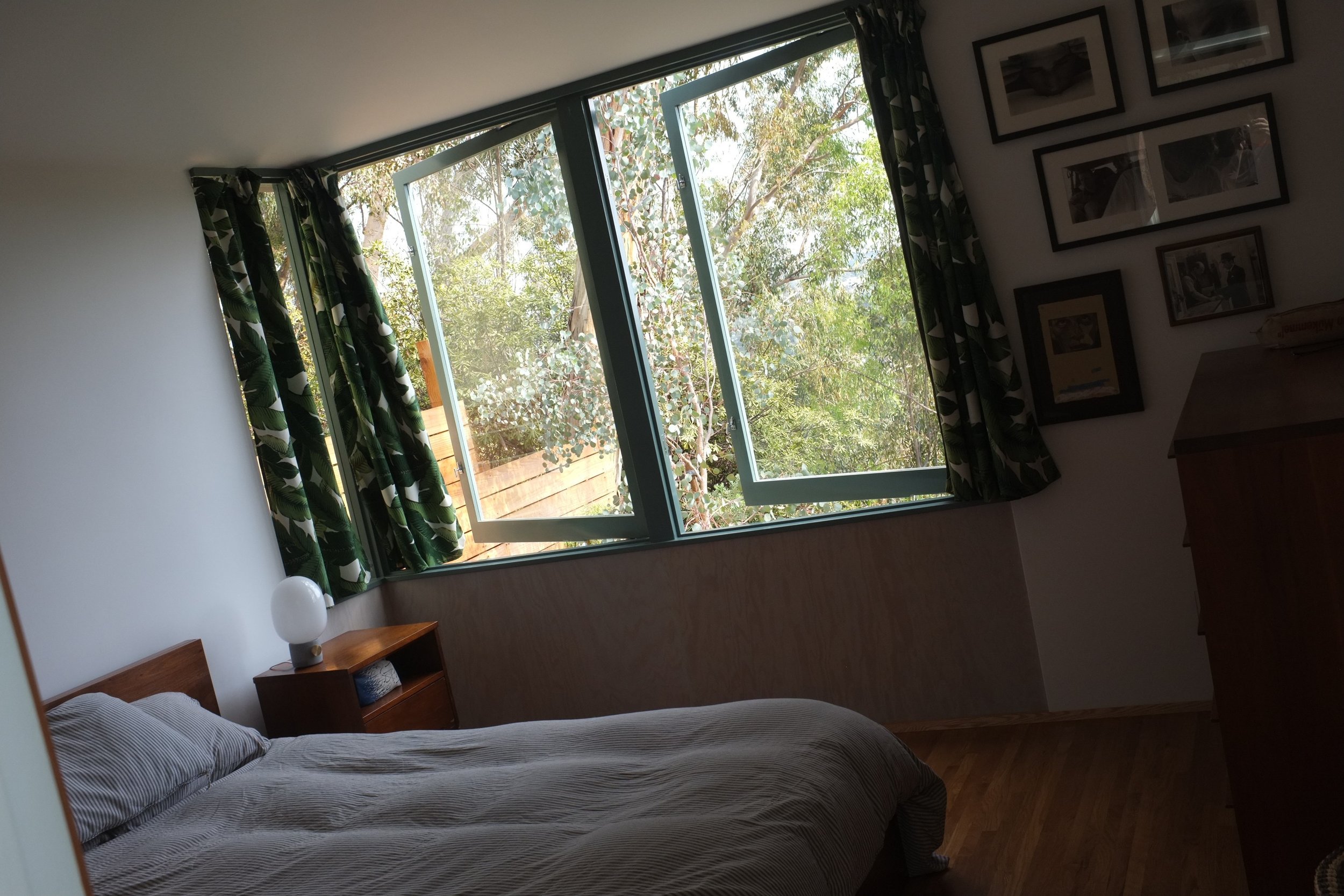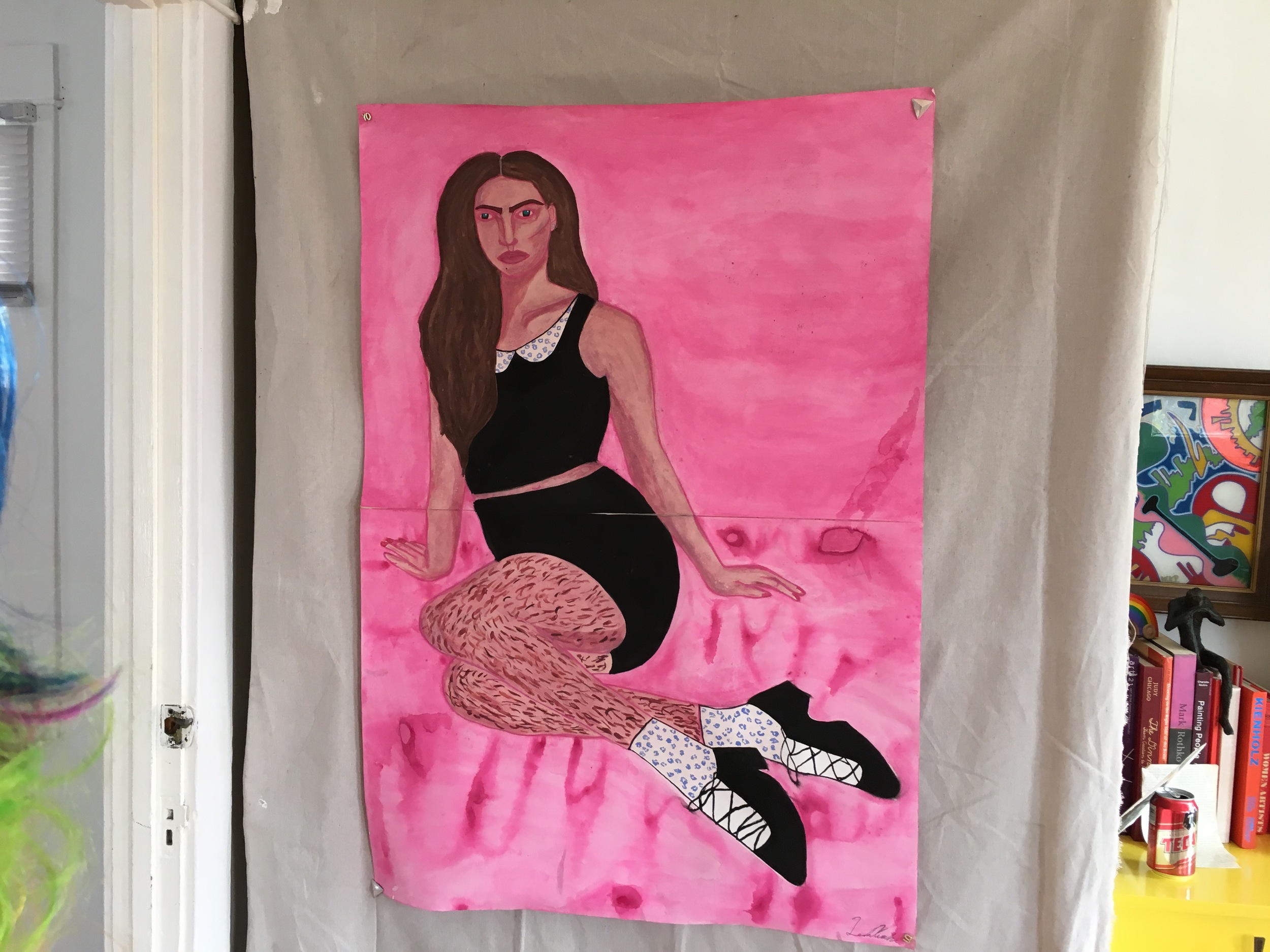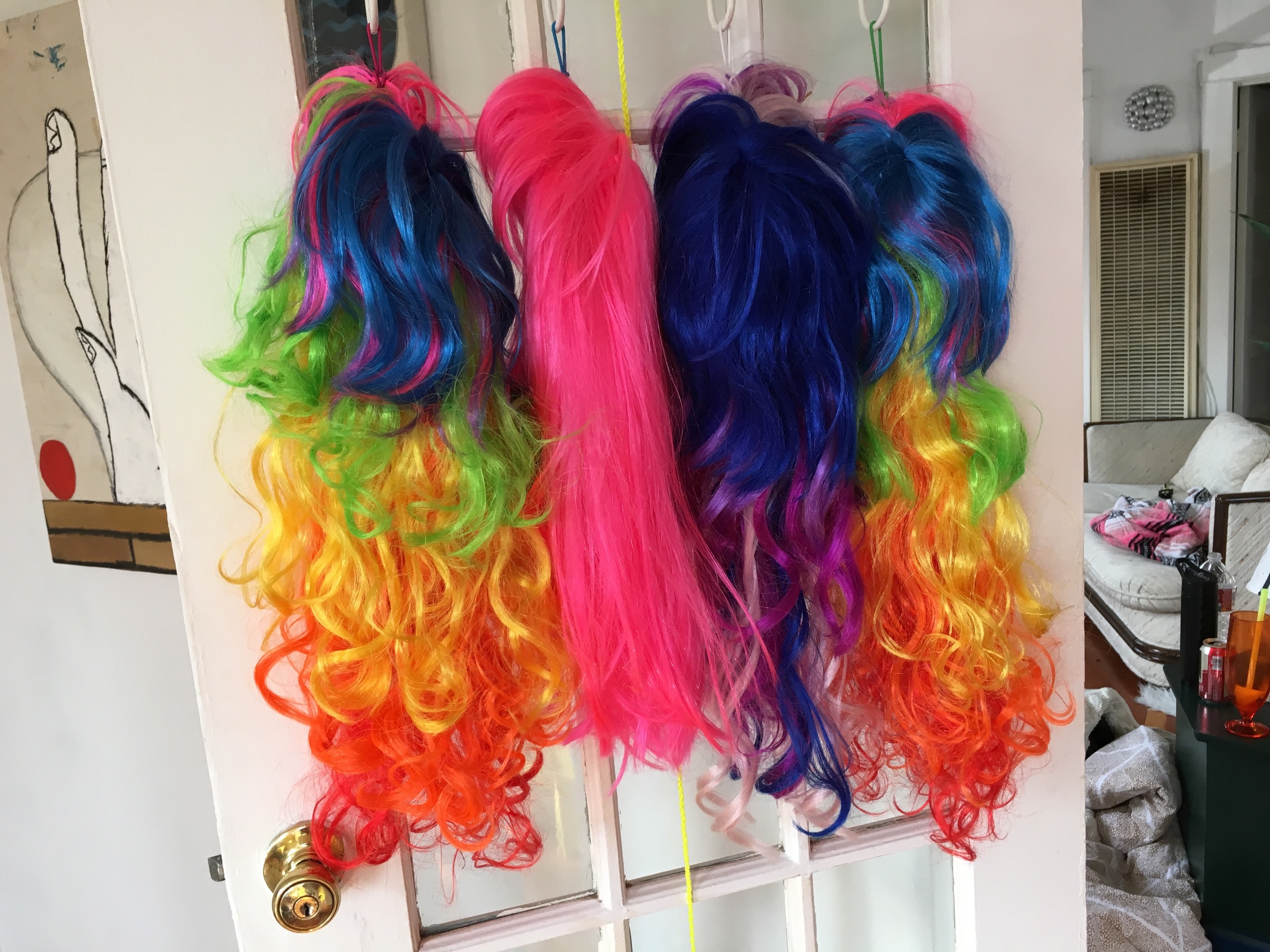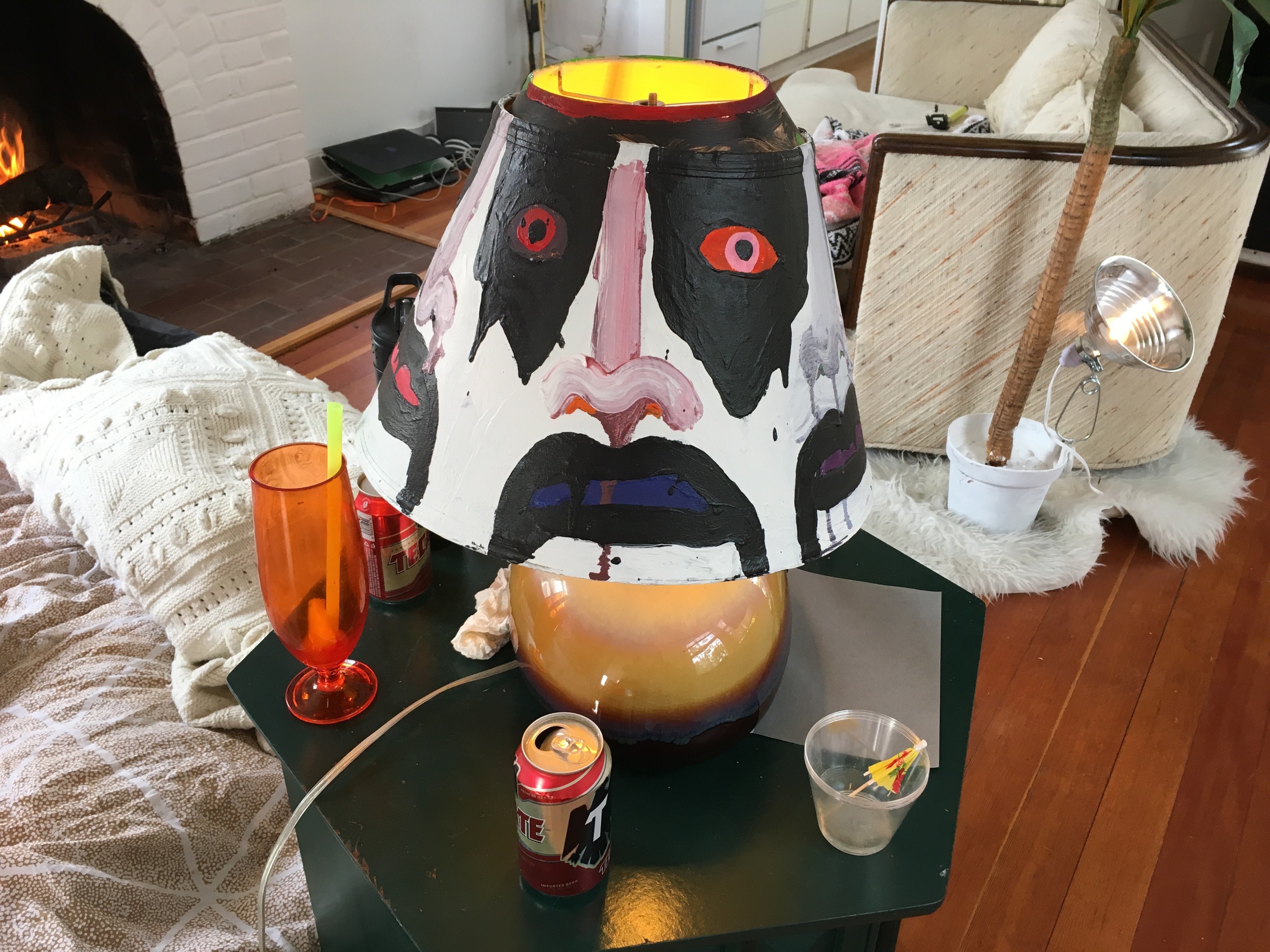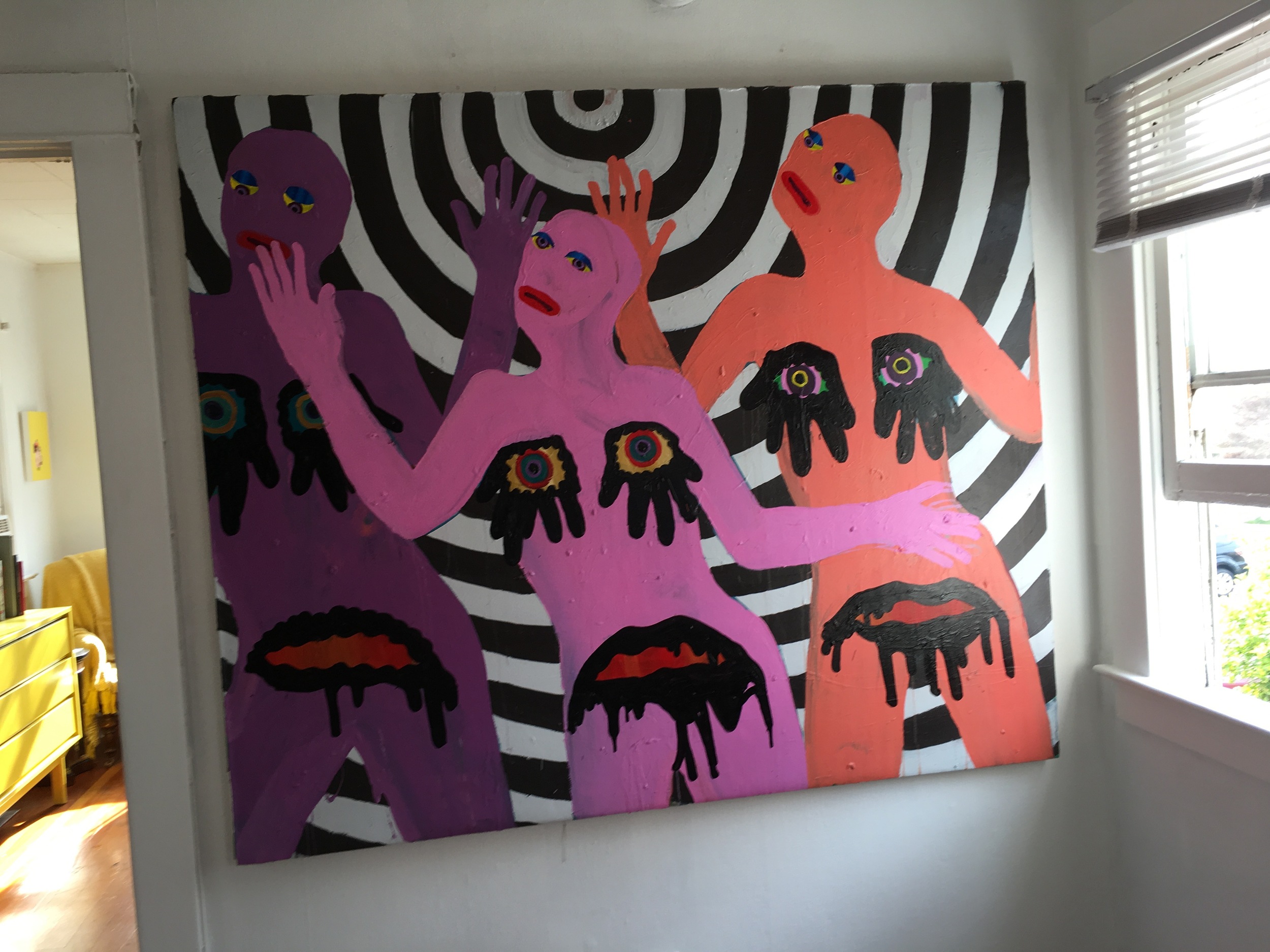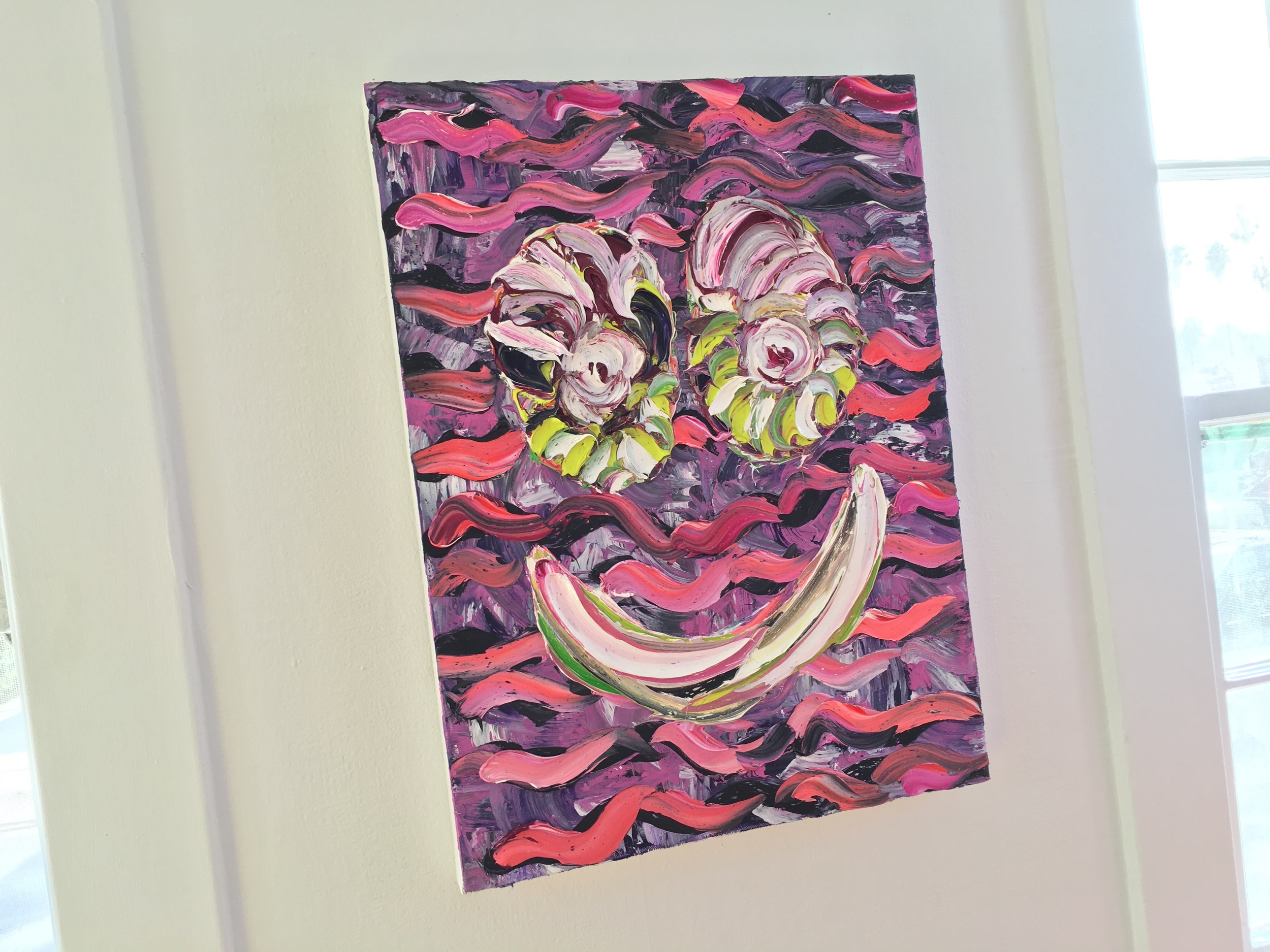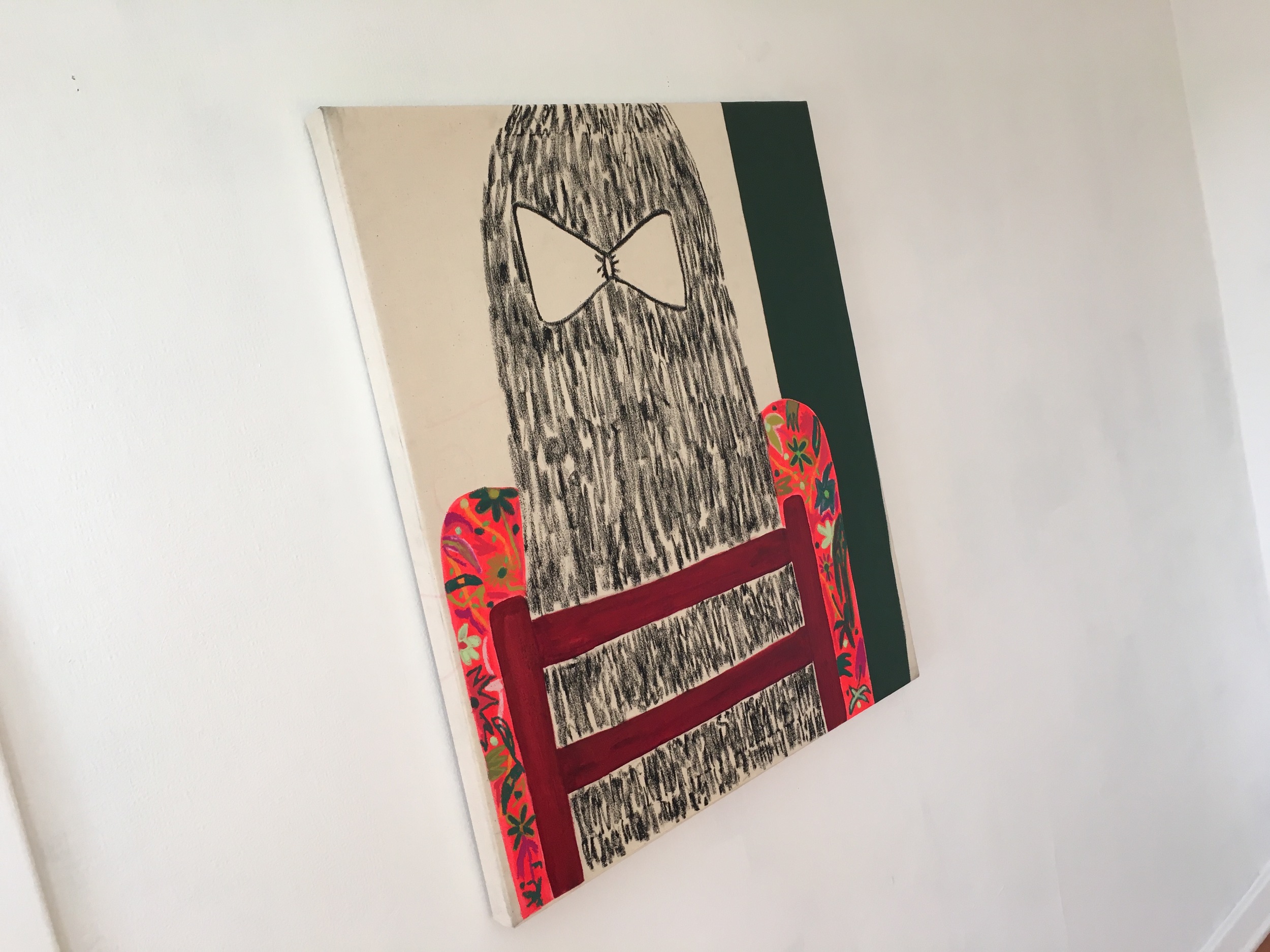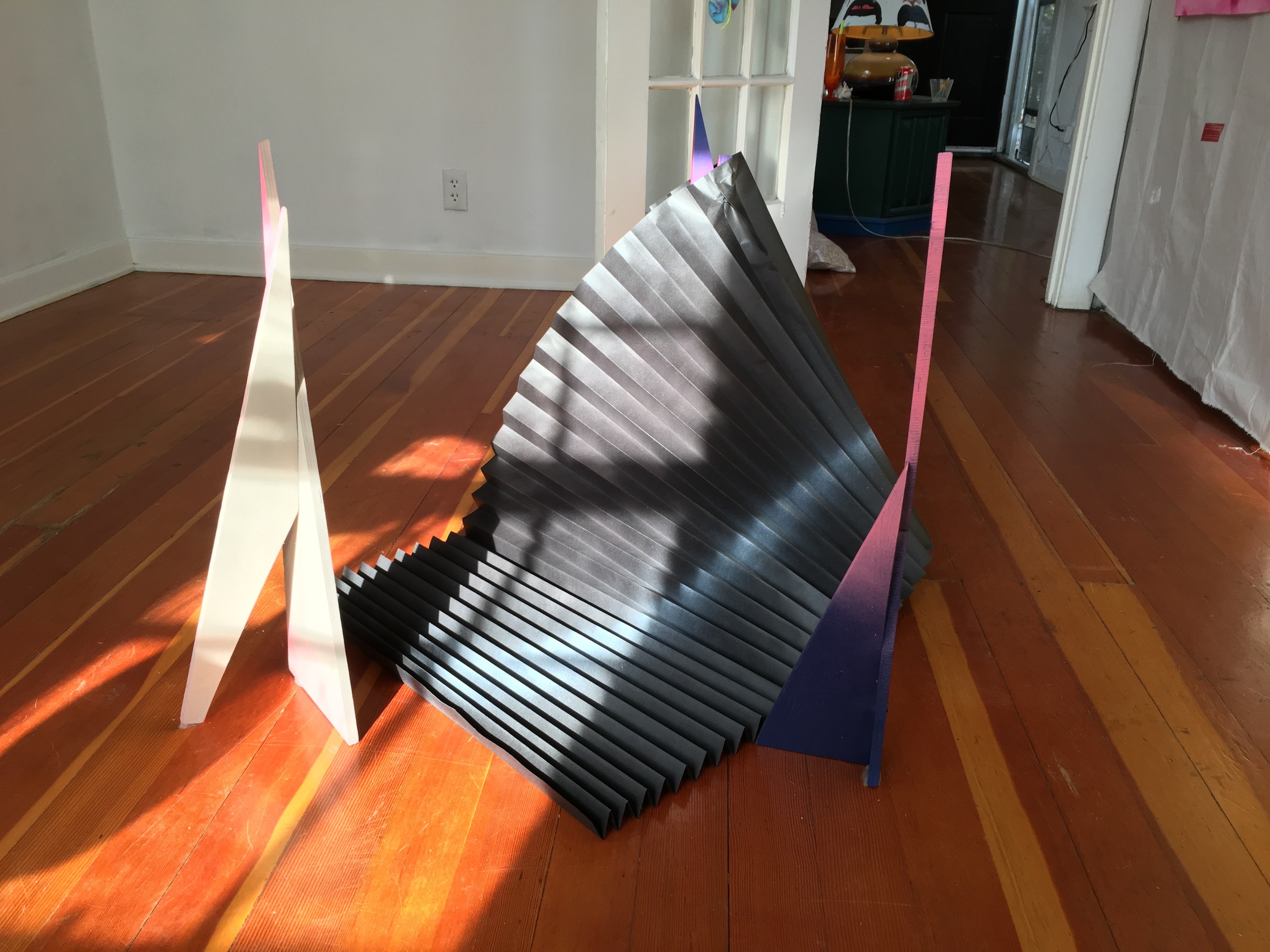With it’s patented curving roof that mimics the peaks of the surrounding San Jacinto Mountains, the iconic Miles C. Bates “Wave House” has been brilliantly and expertly restored by Los Angeles-based Stayner Architects and is now available to book for overnight stays. Every inch of the home in its original incarnation—before a devastating series of remodels—has been reconsidered with exacting precision, save for a few minor modern amenities that enhance the home’s livability and that continue the architect’s vision for domestic desert bliss. Built for an archetypal, midcentury American playboy and sculptor, Miles C. Bates in 1955 by architect and inventor Walter S. White—a former apprentice of Rudolf Schindler—the house exudes the charm of high, but moderate living and square footage devoted to only the essentials; a less-is-more ethos that gives midcentury architecture its understated grandeur. But, while the physical footprint might be minimal, the house feels anything but cramped. The maximization and utilization of space makes the Wave House feel larger than life, a type of floor planning that belongs to only the greatest architects. Large sliding steel-framed glass doors and clerestory windows create a seamless transition from the great indoors to the great outdoors. The roller coaster roof undulates, giving the entire house a kind of oneness that is alluring and near mystical. With original terrazzo floors and ash wood panels, the house is a masterpiece of materiality and sensuous glamour; even the automated curtains have a kind of burlesque eroticism. A small cactus enclosure feels like a private peep show for thirsty and thorny flora. At night, a soaking tub beckons just steps from the bedroom. As architect and engineer Marcus Vitruvius opined in his treatise for Roman architecture, that in order for buildings to have the perfect proportions, they must have three attributes: firmitas, utilitas and venustas (strength, utility and beauty). The Wave House has all three in spades. Click here to book your stay.
Read Our Review Of Kim-Anh Schreiber's New Book Fantasy
text by Summer Bowie
When planning a pregnancy or discussing the process of birth, we often hear about the rebirth that the mother experiences—her renaissance as woman with child, giver of life, and newborn unto herself. It’s such a beautiful image when you ignore the suicide that was planned for the woman who once was. Thus is the balance of life and death, and it's one that some of us contend with more readily than others. Nothing is more apparent than this in Kim-Anh Schreiber’s Fantasy, wherein the book’s titular figure is the daughter of a mother who never stops mourning the life she should have had; her inescapable Karma.
This cross-genre novel is a disembodied lung desperately inflating and deflating itself with stale cigarette smoke and the decades-old dust of whatever room you’re sitting in. It’s a work of autofiction that is equally exposed and pregnable as it is a fictitious hallucination woven like a cosmic braid with scenes from Nobuhiko Obayashi’s 1977 film, House. The intergenerational sorority of aunts, mother, and grandmother that represent the author’s Vietnamese refugee matrilineage become interchangeable with Obayashi’s highly Westernized depiction of archetypal Japanese schoolgirls and the dubious matriarchs who haunt them. The spaces within the house hold formative and traumatic memories alike. They contain cultures of sexually repressed, sisterly perversions that are devoid of sexuality, yet brimming with desire. Schreiber is wont to illustrate scenes in much the same way as Obayashi—little comedic horrors that drip with Agent Orange and irradiated uranium (respectively) over postwar rubble both seen and unseen. House makes a perfect companion for this book in the way that it depicts the domicile as a metaphor for the body. A cell that contains the bodies of all the women who have kept it.
In Fantasy, mother tongue is laced with the mysterious motherland in a braid that spans the Pacific Ocean. A language spoken between grandmother and granddaughter flourishes and fades in this boat they call home, its orbit so wide one forgets that it’s indeed moving. Only her mother’s constant motion is detected as she skirts in and out on an outlet designer dingy, leaving an inexplicably large wake each time on her way out. You can trace the roots of words that have died in the wisps that fly out of one loop or the next, having provided the foundation of their intercontinental bridge, they take an unceremonious bow and quietly escape the lexicon of their nomadic identity. “Ever since I was a little girl, I have lived in a fantastic theatron: a seeing place whose walls keep disappearing, transforming to mask, fly, tease, or torment, and beyond the walls are nothingness, and three generations of women live with me, entering through the door to rehearse their magical future, every character brought down by their character, by the desire to look good as themselves for themselves, and I alone see them, I alone beholding my house, my body, my ghosts and my gods, and my screen that is suddenly a cannibal.”
Am I really so porous that someone could just bleed into me? asks Khaos, a recurring figure whose only identifying characteristics are Daughter Flower, pregnant. Flowers constitute the form of certain characters at times, nourish them at others, and press their withering bodies into the pages of a history book from a forgotten land. Having meticulously studied a smorgasbord of allegories that portray women stuck in houses such as Mekong Hotel, Keeping Up with the Kardashians, Pretty Little Liars, The Virgin Suicides, and so on, Schreiber takes an incisive look at the corporal quality of our deepest psychic understandings and the umbilical cord that carries our identity from one body to the next. She is indefatiguably distinguishing one X from the other in her chromosomal set, knowing that there isn’t a corpus callosum dividing her dual identities, but rather an extensive sequence of yins and yangs swirling; an infinite loop of chain-smoking daisies propelling the turbine of life and death. Like the avatars of an ancient goddess, they circulate the dust that gathers in the corners of the epigenetic house, floating ubiquitously through the air, carrying traces of every dead and living thing that ever graced it with their presence.
Fantasy features cover art by Sojourner Truth Parsons and is published by Sidebrow Books. Click here to preorder. Follow Kim-Anh Schreiber on Instagram.
Doug Aitken And Legendary Actor Udo Kier At The Desert X Preview Cocktail Party
photographs by Oliver Maxwell Kupper
A Tour Of The Daniel House Designed by Gregory Ain Presented By The MAK Center in Los Angeles
photographs by Oliver Maxwell Kupper
"Make Me Really Happy" Inaugural Group Show @ 24Hour Charlies In Los Angeles
photographs by Oliver Maxwell Kupper

